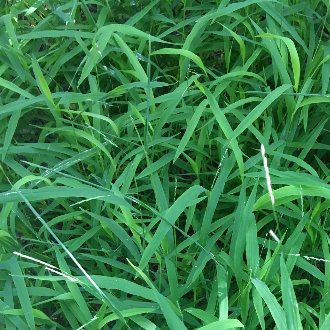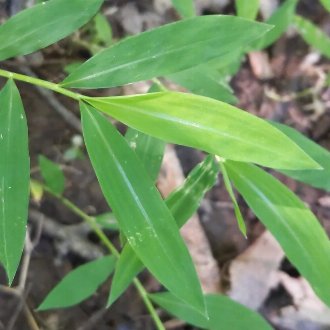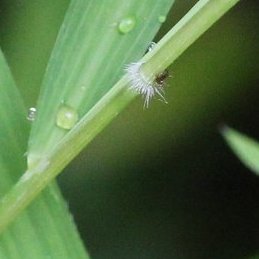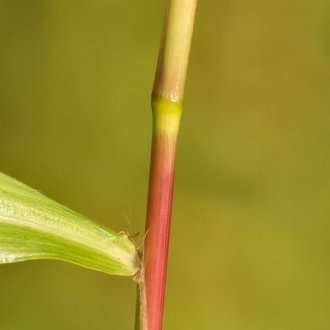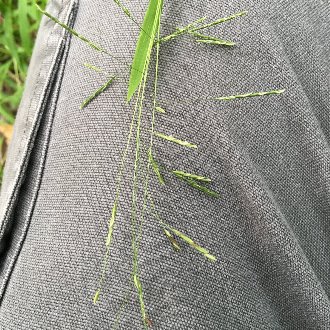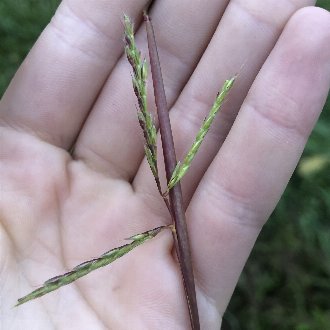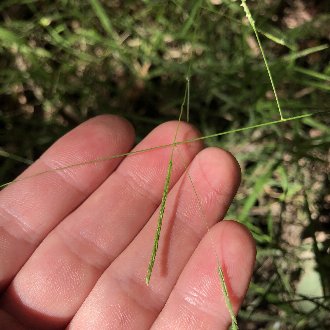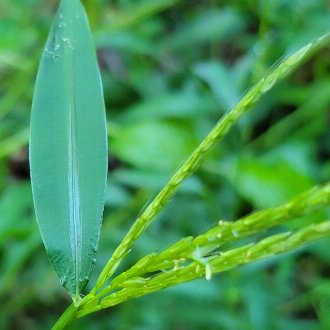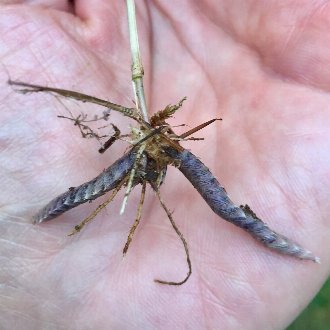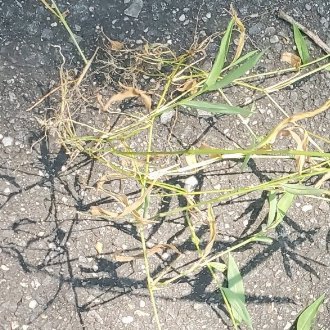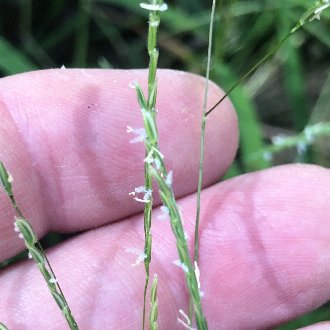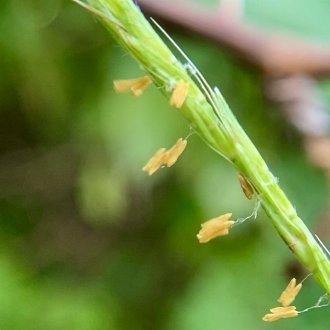Whitegrass vs Japanese Stiltgrass
These two species, one native and one invasive, are easily confused. They often are found together in moist, partly-shaded habitats, especially along paths. Both have a sprawling habit with branching stems that can root at nodes. Leersia virginica ranges farther west, north, and south, is more restricted to partly-shaded, moist to mesic conditions, and prefers habitats with only light to moderate disturbance levels, whereas Microstegium vimineum also ranges into slightly drier and sunnier conditions, and higher levels of disturbance, and can also occur in lawns.
Whitegrass (Leersia virginica) | Japanese Stiltgrass (Microstegium vimineum) |
A perennial grass native to eastern North America, typically found in partly-shaded wet areas. | A shallow-rooted annual grass native to south and east Asia, and invasive in the eastern US. |
Leaf blades average longer (4-20cm), narrower relative to their length, and central vein is not usually paler in color and not as visible. A longer section of the blade is relatively constant in width, leading to a less elliptic shape. Photo © Daniel Atha, Public Domain. | Leaf blades average shorter (3-10cm), broader relative to their length, and midvein is off-center and markedly paler than the rest of the leaf. Blade margins curve gently over most of the length of the blade, leading to a relatively more elliptic shape. Photo © Cecil Smith, CC BY 4.0. |
Stems are pubescent at nodes. Photo © Quinten Wiegersma, CC BY 4.0. | Stems are glabrous (hairless) at nodes. Photo © Bill Keim, CC BY 4.0. |
Inflorescence is a panicle, a many-branching inflorescence, with the branches of unequal length. Inflorescence is much longer (10-25cm.) Photo © Daniel Atha, Public Domain. | Inflorescence is a raceme, a cluster of 2-4 rames, of roughly equal length, attached by short stalks to a central stem, roughly equally spaced. Inflorescence is much shorter, with rames 3-7 cm. Photo © ssunflowered, Public Domain. |
Spikes of flowers/seeds are attached by long stems bare of any flowers or seeds. Photo © Will McFarland, CC BY 4.0. | Spikes (rames) of flowers/seeds only attached by very short stems, often seeming to be directly attached to the central stem. Photo © Navin Sasikumar, CC BY 4.0. |
Plants are perennial, with short, stout rhizomes; rhizomes have a braided appearance, with overlapping scales. Plants are not easily uprooted by pulling gently. Photo © Michael K. Oliver, CC BY 4.0. | Plants are annual, with a shallow, flimsy root system and no rhizomes. Plants are easily uprooted even without applying much force. Photo © Alex Zorach, CC BY 4.0. |
Plants bloom and set seed earlier, about a month earlier on average but with significant overlap. Bloom period is typically mid-summer to early autumn. Anthers are white. Photo © Robert Ross, Public Domain. | Plants bloom later, but with significant overlap. Bloom period is early to mid-autumn. Anthers are yellow or may be reddish to purple. Photo © Emily Summerbell, CC BY 4.0. |
Additional Notes
The later bloom time of stiltgrass may reflect the fact that it is an annual and thus must put all its energy into seed production before dying, whereas Leersia virginica, being perennial, can invest some of its late-season photosynthetic productivity back into its root system. The fact that stiltgrass is easier to uproot reflects its flimsier root system. Stiltgrass's greater investment in above-ground growth gives well-established plants a competitive advantage against other plants, whereas Leersia virginica's perennial nature helps it to compete more favorably against emerging seedlings. This disparity corresponds to the fact that stiltgrass prefers slightly more disturbed habitats.Where these two plants are found growing together on sites that are not mowed regularly, Leersia virginica often occupies a lower layer whereas stiltgrass reaches higher up. Mowing however can complicate this pattern, as stiltgrass can sometimes survive lower mowing than Leersia virginica by retaining stems growing close to the ground. When these species occur together, often nimblewill (Muhlenbergia schreberi), which also is perennial and stronger-rooted, is also growing in the lower layer. This disparity, combined with stiltgrass' flimsy root system, can sometimes facilitate easily removing the stiltgrass without harming other vegetation.
The disparity of root systems in these plants also reflects the fact that stiltgrass uses C4 metabolism, a mechanism that better-conserves water, whereas Leersia virginica uses C3 metabolism, and thus demands a more extensive root system relative to the same surface area of leaf.
References & External Resources
These short lists show only links helpful for ID. For a complete list of references and resources also covering other aspects of ecology, visit the links section of the full article on each plant, which is the first entry here.



